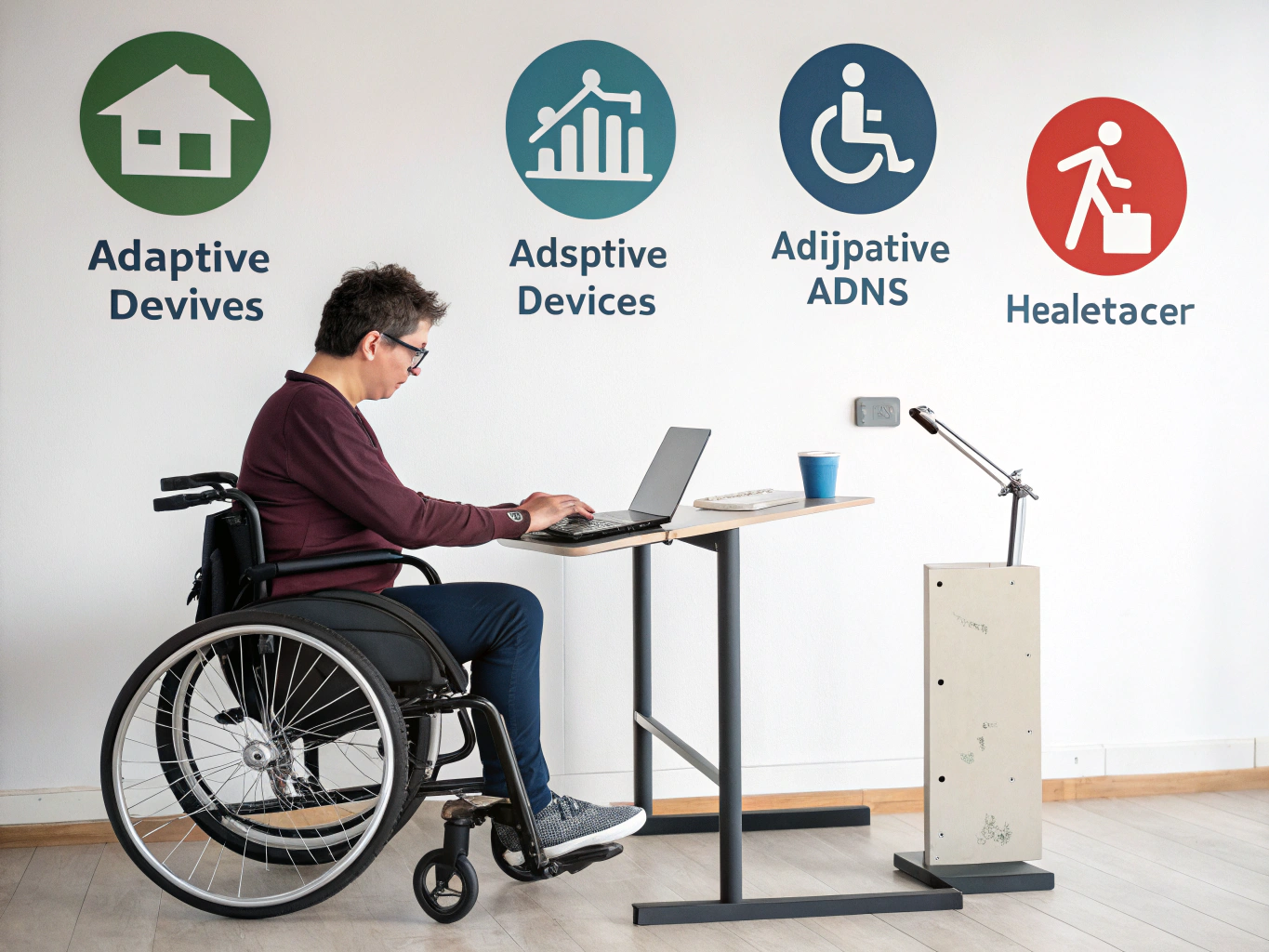Definition
An adaptive device, often referred to as an assistive device, is a specialized piece of equipment or technology designed to help individuals with disabilities perform their job tasks more effectively. These devices aim to remove barriers, making the workplace more inclusive and accommodating for everyone. Think of them as tools that empower individuals by enhancing their capabilities and promoting independence.
Key Components
Understanding adaptive devices means recognizing the various types and how they support different needs in the workplace. Here are some key components to consider:
- Mobility Aids: These devices, such as wheelchairs, crutches, and scooters, assist employees with physical mobility challenges. For instance, an employee who uses a wheelchair may require wider office spaces or accessible ramps to navigate comfortably.
- Assistive Technology: This includes software and electronic devices that aid those with sensory or cognitive impairments. A great example is screen readers that help visually impaired employees access digital information, allowing them to participate fully in tasks and meetings.
- Communication Aids: Essential for individuals with speech or language difficulties, tools like speech-generating devices or communication boards can facilitate effective interaction with colleagues. Imagine a team meeting where everyone can contribute, thanks to these resources.
- Ergonomic Equipment: Items such as adjustable desks, supportive chairs, and specially designed keyboards help reduce physical strain and enhance comfort. For example, an ergonomic chair can prevent back pain for employees who spend long hours at their desks.
- Customizable Tools: These are devices that can be tailored to meet individual needs, such as software that can adjust settings based on an employee’s specific requirements. Customization is key to ensuring that the tools provided are effective for each person.
Importance in the Workplace
Adaptive devices matter significantly in creating a diverse and inclusive work environment. When employees with disabilities have the right tools, they can perform their tasks efficiently, which not only boosts their confidence but also enhances overall team productivity. For instance, a company that equips its workforce with adaptive devices opens doors to a larger talent pool, fostering a culture of acceptance and innovation.
Consider a scenario where a marketing team includes a member who is deaf. By providing communication aids such as video relay services or captioning during meetings, the company ensures that this employee can fully engage in discussions, share ideas, and contribute to projects. This not only benefits the individual but enriches the team’s overall creativity and collaboration.
Best Practices
Implementing adaptive devices effectively requires thoughtful strategies. Here are some best practices to consider:
- Conduct Assessments: Before selecting adaptive devices, assess the specific needs of employees. Involve them in conversations to understand their challenges and preferences, ensuring that the chosen devices meet their unique requirements.
- Provide Training: Once adaptive devices are implemented, offer comprehensive training sessions. This helps employees feel more comfortable and confident using the tools. For example, demonstrating how to use a screen reader can significantly enhance its effectiveness for a new user.
- Encourage Feedback: Create a culture of open communication regarding adaptive devices. Encourage employees to provide feedback on the effectiveness of the tools and any additional needs they may have. Regular check-ins can help identify areas for improvement.
- Stay Informed: Keep up with the latest advancements in adaptive technology. Regularly review and update the devices available to employees to ensure they have access to the best possible tools that suit their needs.
- Promote Awareness: Educate the entire workforce about the importance of adaptive devices and how they contribute to an inclusive workplace. This can help reduce stigma and promote a more supportive environment for everyone.
Legal Considerations
It’s important to recognize the legal responsibilities associated with providing adaptive devices. Under the Americans with Disabilities Act (ADA) and similar legislation in other countries, employers are required to provide reasonable accommodations to employees with disabilities. This includes the provision of adaptive devices where necessary. Failing to comply not only limits opportunities for affected employees but can also lead to legal consequences for the organization.
Conclusion
Understanding adaptive devices is crucial for fostering an inclusive workplace. By embracing these tools, you not only empower individuals with disabilities but also enrich the entire work environment. Remember, when everyone has the opportunity to contribute their best, the whole team thrives. So, take the time to assess needs, implement effective solutions, and celebrate the diversity that adaptive devices bring to your workplace!




